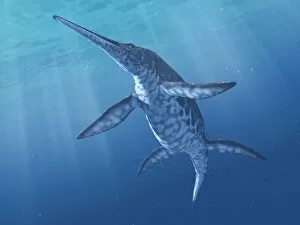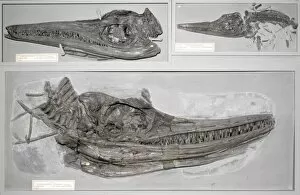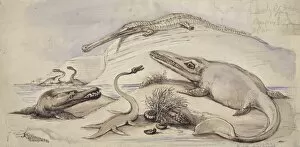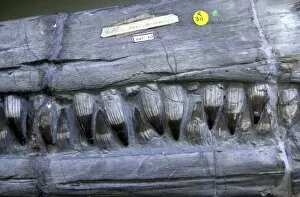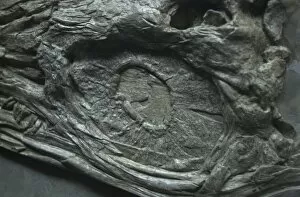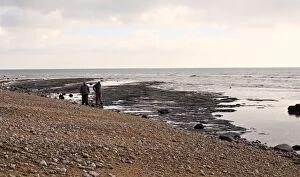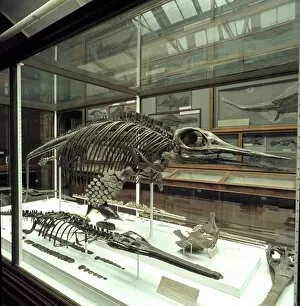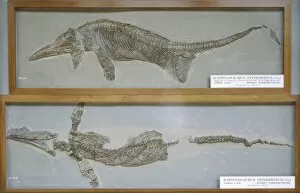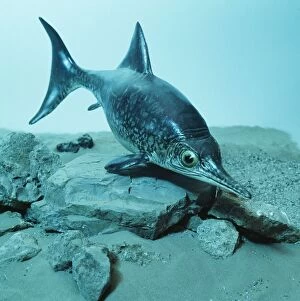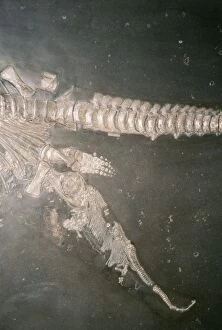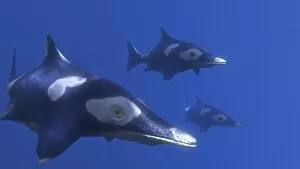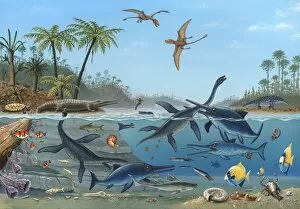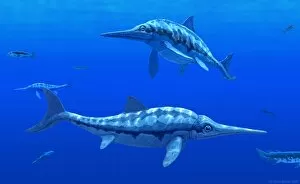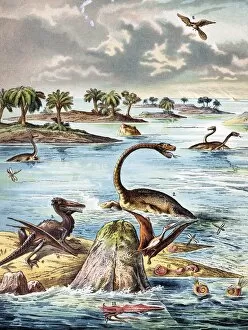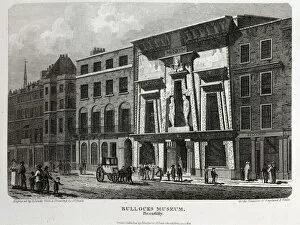Ichthyosaur Collection (page 3)
In 1855, the Punch Dinosaurs Crystal Palace exhibition showcased a fascinating array of prehistoric creatures, including the awe-inspiring ichthyosaur
For sale as Licensed Images
Choose your image, Select your licence and Download the media
In 1855, the Punch Dinosaurs Crystal Palace exhibition showcased a fascinating array of prehistoric creatures, including the awe-inspiring ichthyosaur. This ancient marine reptile, along with its counterparts like the Plesiosaurus and Pterodactylus, captivated visitors with their otherworldly features. The story of the ichthyosaur dates back to 1814 when Mary Anning discovered the first skull of this extinct creature. Since then, it has become an iconic museum piece, representing a bygone era in Earth's history. The British fascination with prehistoric marine reptiles continued in 1862 when a collection dedicated solely to these magnificent creatures was unveiled. The exhibit featured various species such as Ichthyosaurus acutirostris and showcased their intricate details through meticulous reconstructions. However, not all depictions were accurate or well-received. The infamous "Awful Changes" cartoon depicted these ancient reptiles in comical and exaggerated ways that deviated from scientific accuracy. Despite this misrepresentation, it highlighted society's growing interest in paleontology during that time. Another notable portrayal can be found in Reynolds' book "The Antidiluvian World" published in 1849. This publication provided detailed engravings showcasing breathtaking scenes like the epic battle between Plesiosaurus and Temnodontosaurus (Oligostinus), capturing readers' imaginations and sparking further curiosity about these long-extinct beings. Today, we continue to marvel at these incredible creatures that once roamed our oceans millions of years ago. The legacy of the ichthyosaur lives on through fossils carefully preserved in museums worldwide – reminding us of Earth's rich history and inspiring future generations to explore our planet's mysteries beneath its vast waters.

